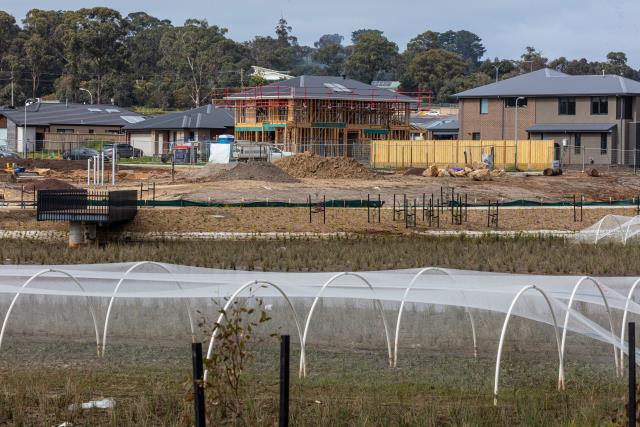
By Adrian Black, Aap
Victoria’s food supply is being undermined by increasing land-use competition, fractured planning decisions and a lack of an overarching strategy to develop and feed the state, an inquiry has been told.
Victorian Farmers Federation president Emma Germano said the state’s agricultural potential was being compromised because incremental planning decisions at different government levels were encroaching on productive land.
“We lack an overall or overarching strategic plan around food supply and … we fail to even value the economic benefit of that food supply in this state,” she told the legislative assembly committee inquiry into securing food supply on Friday 3 May.
“We’re seeing the degradation of the amount of land and they’re not making any more of it.”
Melbourne’s population is expected to grow from about five million people to nine million by 2050, while Victoria’s is expected to grow to 11 million, a transport and planning representative told the committee.
“This population growth increases the demand for food and fibre production and places pressure on natural systems, urban areas and farmlands,” director of strategic land use planning, Michael Orford, said.
He said the State Government’s land-use action plan, released in March, set out measures to protect Victorian agricultural land and food production, on top of existing legislative measures such as Melbourne’s urban boundary and zoning restrictions.
RMIT environment and planning professor Michael Buxton said the land-use planning system had been used to undermine policies aimed at protecting the agricultural use of Melbourne’s green belt.
“It has expanded the urban growth boundary, introduced urban-related uses in green wedge zones … and further radically deregulated the planning system,” he told the committee.
Prof Buxton called for a rigid urban growth boundary for the city, which would also protect agricultural and environmentally significant rural areas from development.
Ms Germano said Victoria’s population growth provided opportunities and complications for the state’s agriculture sector.
“There’s going to be more opportunities locally to supply our food,” she said.
“(But) it means that there’s going to be more challenges in regards to that land-use conflict.”
Farmers are expected to host biodiversity services, carbon sequestration and renewable infrastructure while also producing food, Ms Germano said.
Food systems network Sustain backed calls for a national food supply chain map after the Covid-19 pandemic uncovered weaknesses.
“What the pandemic showed us was that the supermarket supply chain, which was very centralised, really struggled during those supply chain disruptions,” Sustain co-founder Kelly Donati said.
Municipal Association of Victoria senior policy adviser, James McLean, said a lack of state policy planning framework left councils lacking direction in local level planning decisions.
“What council planners, when it comes to food supply and protecting agricultural land, are most worried about is this sort of death by a thousand cuts,” Mr McLean said.
“It’s about having really strong policy to say ‘we’re drawing the line here’ and going ‘actually, the housing supply needs to happen in these areas’.”






